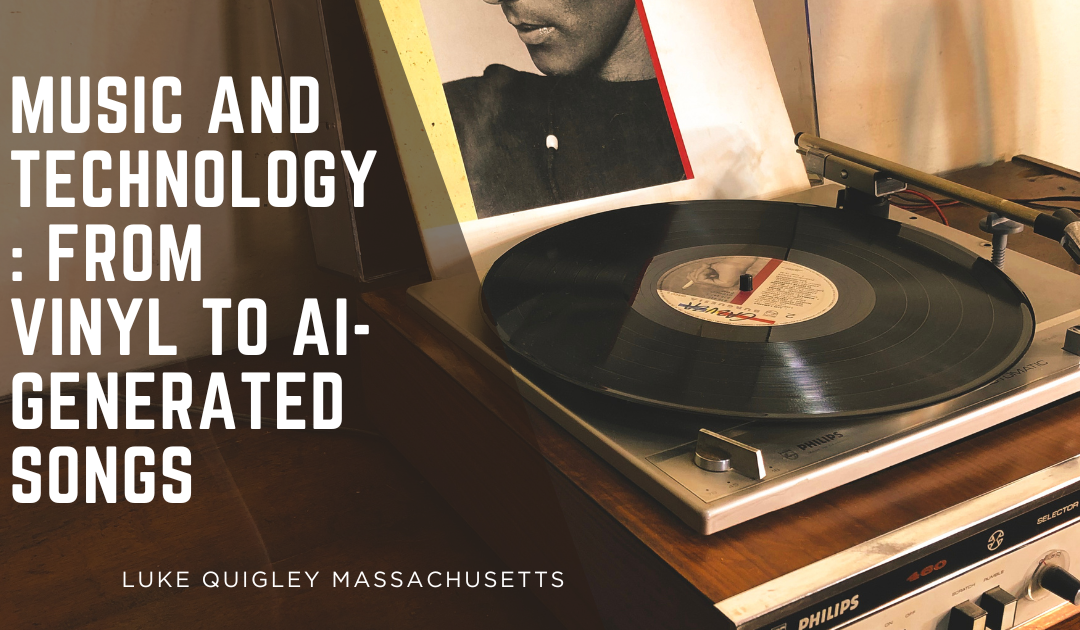The way we create, distribute, and experience music has transformed dramatically over the past century, largely due to technological advancements. From the warm crackle of vinyl records to the precision of artificial intelligence composing original music, the journey of music and technology is a fascinating story of evolution, accessibility, and innovation.
Vinyl records, introduced in the late 1940s, were a revolutionary step in sound recording. For the first time, people could enjoy high-fidelity audio in their own homes. The physical nature of vinyl required a tactile interaction with music—placing the needle, flipping the record, caring for the collection. Listening was intentional, often a shared experience that brought people together. Vinyl also marked the beginning of the album era, where artists could explore thematic continuity across multiple tracks.
The 1960s and 70s saw the rise of magnetic tape, including cassette tapes and 8-tracks, which allowed people to listen to music on the go. For the first time, music became portable. The invention of the Sony Walkman in 1979 gave people personal soundtracks to their lives. Mixtapes became a creative form of expression and a cultural staple.
The 1980s ushered in the digital age with the introduction of compact discs (CDs). CDs offered superior sound quality, durability, and ease of use compared to tapes and vinyl. They also made music more affordable and accessible to the masses. However, the digital format also paved the way for a massive shift in how music was stored and shared.
The late 1990s and early 2000s were a turning point. With the rise of the internet and MP3 files, music began to lose its physical form. File-sharing platforms like Napster disrupted the industry by allowing users to download songs for free. This forced artists and labels to rethink their business models. iTunes and the iPod soon emerged, offering a legal and convenient alternative. The concept of owning individual songs rather than full albums became popular, changing listening habits forever.
Streaming services like Spotify, Apple Music, and YouTube further revolutionized the way people consume music. With millions of songs available at the tap of a screen, music became more accessible than ever. Playlists replaced albums as the dominant listening format. Data analytics began playing a larger role in how artists reach audiences, with algorithms recommending music based on user behavior.
Perhaps the most futuristic development in music technology is the integration of artificial intelligence. AI is now capable of analyzing music trends, generating compositions, and even mimicking the style of famous artists. Tools like Amper Music, Jukedeck, and OpenAI’s MuseNet are examples of how AI is being used to create original songs. While still in its early stages, AI-generated music raises intriguing questions about creativity, authorship, and the future of artistry.
On the production side, technology has democratized music creation. In the past, recording a song required access to expensive studio equipment. Today, anyone with a laptop and a digital audio workstation (DAW) can compose, mix, and master music from home. Virtual instruments, sample libraries, and plugins give artists access to sounds and effects that once required a team of professionals to produce.
Social media platforms have also become essential tools for music discovery and promotion. Artists now engage directly with fans, perform live streams, and go viral with a single clip. The power dynamic between artists and record labels has shifted, with many musicians opting for independent paths powered by digital tools.
Despite all this technological progress, the essence of music remains the same. It continues to be a universal language that evokes emotion, tells stories, and brings people together. While the medium has changed, the message—and its impact—remains strong.
As we look to the future, it’s clear that music and technology will continue to evolve side by side. From virtual reality concerts to immersive audio formats and further advancements in AI, the possibilities are endless. One thing is certain: the journey from vinyl to AI is just the beginning of an exciting new era in music.

